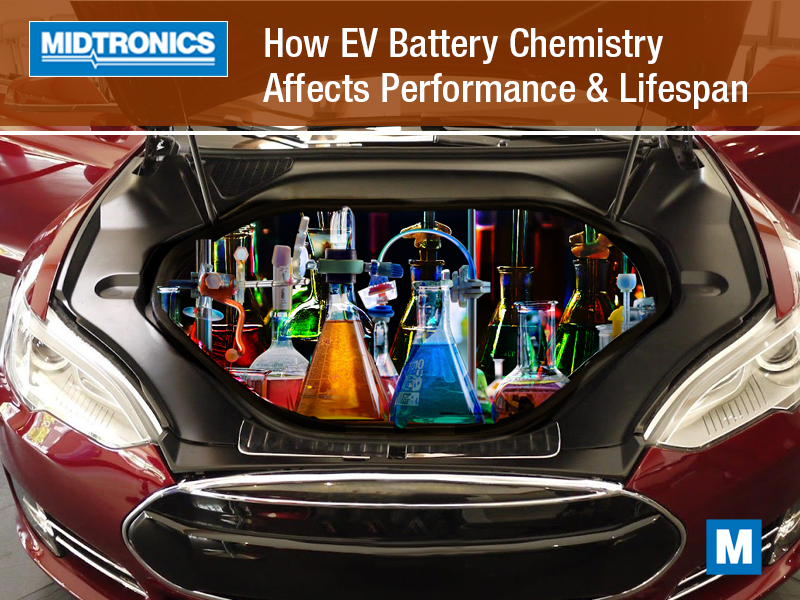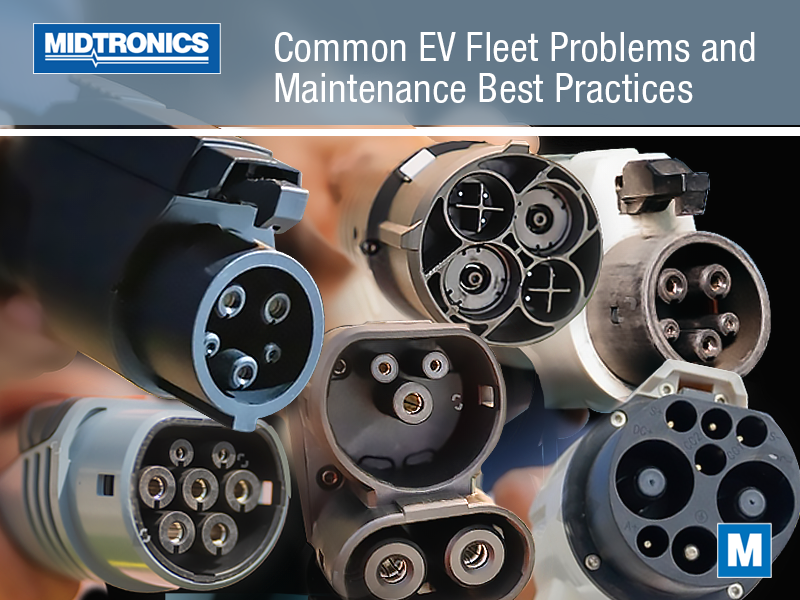EVs are reshaping the automotive landscape, offering cleaner and more efficient alternatives to traditional vehicles. For automotive service personnel, understanding EV battery chemistry is no longer optional, but absolutely pivotal. Battery chemistry not only influences the performance and range of EVs but also determines their lifespan and maintenance needs.
This knowledge helps technicians provide better service and extend the life of these vehicles, and service providers can help educate customers who come in for maintenance and repairs. Take a closer look at the most common EV battery chemistries, how they perform based on their watt hours per kilogam, or Wh/kg, and how long they can be expected to last according to charge cycles.
Lithium-Ion Batteries: High Performance, Reliable Lifespan
Lithium-ion batteries are the industry standard for EVs, thanks to their excellent energy density and efficiency. These batteries typically offer an energy density of 150 to 250 Wh/kg, which translates into competitive ranges for EVs – often between 200 to 400 miles per charge, depending on the vehicle model and battery capacity.
In terms of lifespan, lithium-ion batteries generally last 8 to 10 years or about 1,000 to 1,500 full charge-discharge cycles under normal use, but it can sometimes be 15 years or longer. Lifespan can vary significantly based on factors like charging habits, temperature exposure, and driving conditions. Frequent fast charging or exposure to both hot and cold extreme temperatures can accelerate degradation, reducing their long-term capacity.
For service professionals, it’s important to monitor metrics like the state of health (SOH) and state of charge (SOC) which can help identify when a lithium-ion battery needs maintenance or when it’s nearing the end of its useful life.
Lithium Iron Phosphate Batteries: Safe and Durable
Lithium iron phosphate (LFP) batteries are valued for their safety and how long they last. Although their energy density is lower than lithium-ion batteries, typically around 90 to 160 Wh/kg, they still deliver reliable performance. EVs with LFP batteries generally offer a range of 150 to 250 miles, which may not match lithium-ion-powered models but is usually enough for many consumers, especially in urban settings who can charge their car regularly.
LFP batteries excel in lifespan, often lasting 2,000 to 4,000 cycles, which translates to 10 to 15 years of use under ideal conditions. Their cycle life and resistance to overheating make them a popular choice for applications where safety and durability are more important than maximum range. However, one downside is reduced efficiency in cold climates, which can lower their effective range and performance more than other chemistries
Service personnel working with LFP batteries should focus on promoting moderate operating temperatures and advising customers on the best charging methods to maximize both range and lifespan.
Nickel-Manganese-Cobalt Batteries: High Energy, Balanced Lifespan
Nickel-manganese-cobalt (NMC) batteries are among the most versatile options, offering a balance of energy density, performance, and lifespan. With energy densities ranging from 150 to 220 Wh/kg, NMC batteries deliver excellent ranges, often between 250 and 400 miles per charge in most EV applications.
In terms of lifespan, NMC batteries typically last around 1,000 to 2,000 cycles, which translates to 8 to 10 years of reliable use. However, like lithium-ion batteries, their performance can degrade faster when exposed to high stress, such as frequent fast charging or extreme heat. Manufacturers often fine-tune the ratio of nickel, manganese, and cobalt to optimize batteries for specific applications. Higher nickel content, for example, increases energy density but may reduce the lifespan.
For technicians, thermal management is critical. Proper diagnostics tools can help ensure NMC batteries operate within the right temperature range, helping them last to the customers’ expectations.
Nickel-Metal Hydride Batteries: Sturdy but Outdated
Nickel-metal hydride (NiMH) batteries, once common in hybrid vehicles and early EVs, have been largely replaced by more advanced chemistries. With energy densities of just 40 to 70 Wh/kg, they are far less efficient than modern lithium-based batteries. This translates into a shorter range, typically no more than 100 to 150 miles per charge, making them much less desirable for most EV shoppers today.
Despite their lower performance, NiMH batteries are known for their safety and ability to stand up to heavy use. They can handle high power demands without overheating and usually last around 800 to 1,000 cycles, or about 6 to 8 years under normal use. You should be aware that they are prone to a “memory effect,” which can reduce capacity if the battery isn’t fully discharged regularly.
For service personnel, maintaining them involves monitoring for capacity loss and addressing any issues with their comparatively heavy weight, which can put a strain on other components over time.
Solid-State Batteries: The Game-Changer to Come
Solid-state batteries represent the future of EV technology, offering a leap forward in both performance and safety. With energy densities projected to exceed 300 Wh/kg, these batteries could enable ranges of 500 miles or more on a single charge. The solid electrolyte also makes them far safer, virtually eliminating the risk of thermal runaway or fire.
In terms of lifespan, solid-state batteries are expected to last over 2,000 cycles or approximately 15 to 20 years, with minimal capacity loss. However, they remain in the experimental or early-production stage, and challenges like high manufacturing costs and determining how to scale them still need to be addressed before they become mainstream.
As this technology evolves, service personnel will need to adapt to new tools and methods to work with solid-state batteries. These batteries promise to redefine expectations for EVs, and many shoppers can’t wait for their arrival.
Why Understanding Battery Chemistry Matters
For automotive service personnel, understanding EV battery chemistry is a vital part of providing excellent service. Each battery type, whether lithium-ion, LFP, NMC, NiMH, or solid-state, has unique characteristics that impact how they’re worked on and customer satisfaction.
By staying informed, service professionals can make sure that customers get the most out of their EVs, while also positioning themselves as trusted experts in a competitive field.
How Midtronics Supports EV Battery Diagnostics
At Midtronics, we understand the complexities of EV battery chemistry and the challenges that come with servicing this technology. As a global leader in automotive battery diagnostic and testing equipment, we provide the tools and expertise you need to stay ahead.
Battery chemistry is at the heart of EV performance and with the right knowledge and tools, you can play a key role in shaping a sustainable, reliable future for electric vehicles.




